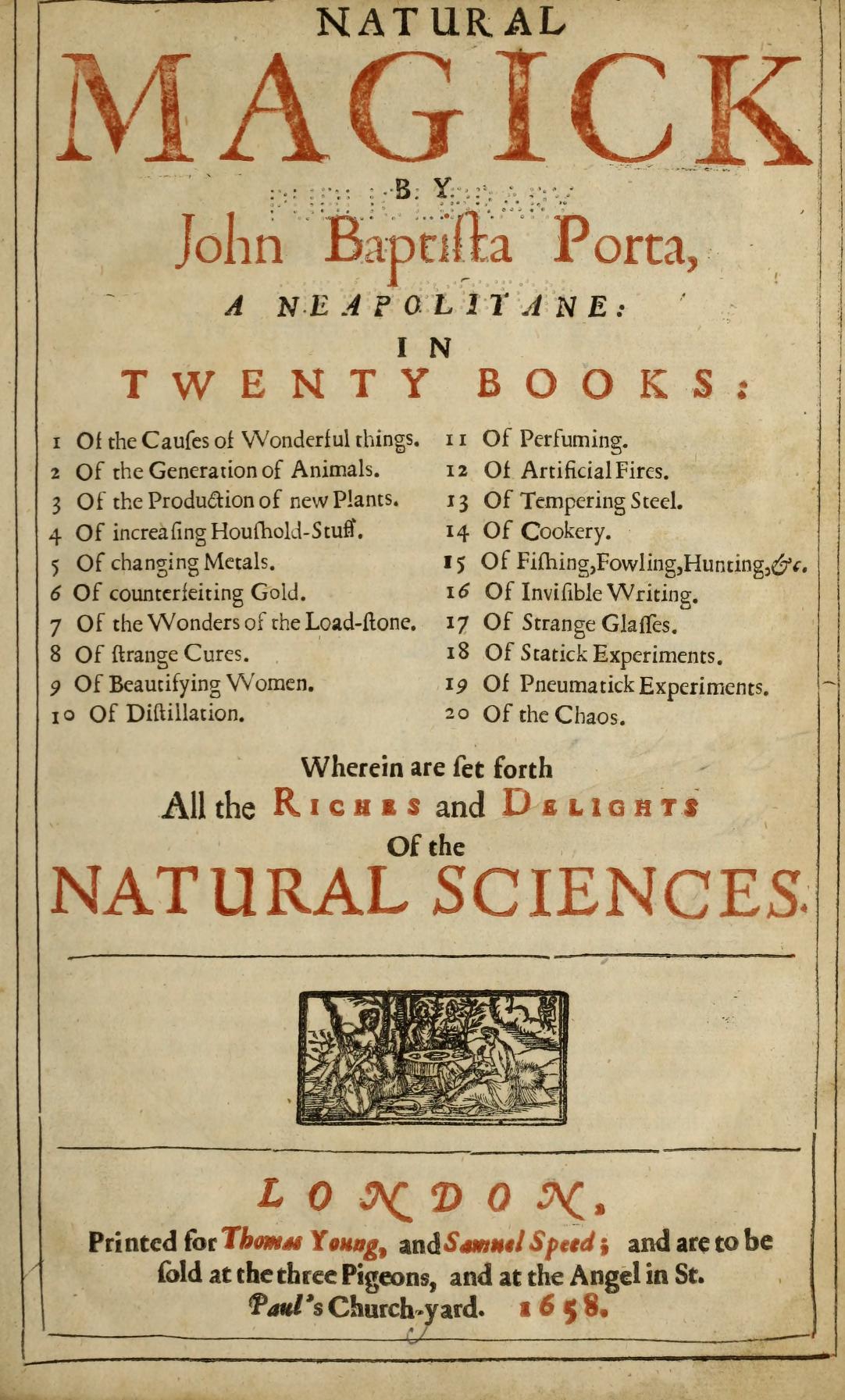Artists and Artisans
The slides for this week's lecture are available for download here
The fifteenth and sixteenth centuries saw a 'technical revolution' in which artisans and artisans produced a flood of written descriptions of their work. At the same time they argued for the dignity of manual labour and the intellectual value of studying the crafts. Scholars and craftsmen worked together more closely than before, with the aim of describing and improving the arts. Paolo Rossi described these phenomena in a book published in English in 1970, arguing that the convergence of scholars and craftsmen in the Renaissance was a necessary condition for the scientific revolution. Later historians have enriched Rossi's account by studying patrons such as kings and emperors, physical sites such as mines and dockyards, and 'pseudo-sciences' such as natural magic, all of which helped to break down the intellectual and social barriers that had long existed between manual and mental labour. But did this convergence of the mind and the hand help to create modern science? Some historians are skeptical. They appeal to premodern examples of scholar-artisan interactions, early modern sciences that appear to have had little input from the crafts, and the great difficulty of drawing theoretical insights from the confused mass of practical information that became newly available to natural philosophers in the Renaissance.
Questions
What was natural magic?
In what way did natural magic bring together scholars and artisans?
Was natural magic a pseudo-science? Does that question even make sense?
Essential reading
Dear, Peter. 'The Alchemist, the Craftsman and the Scholar.' In Revolutionizing the Sciences.
Henry, John. 'Magic and the Origins of Modern Science.' In The Scientific Revolution and the Origins of Modern Science.
Giambattista della Porta, Natural Magick (English ed., London, 1658; first published in Italian, 1589) Read the following:
-- book 1, chapters 7, 8 and 9, starting on this page:
https://archive.org/stream/naturalmagick00port#page/8/mode/2up
-- one chapter of your choice from one book of your choice. The chapter should be at least half a page long. You may need to hunt around a bit for a chapter that is a) understandable, and b) helps to answer the questions above. For a list of books and their titles, see here:
https://archive.org/stream/naturalmagick00port#page/n7/mode/2up
Further reading - general
Bennett, Jim. 'The Mechanical Arts.' CHS 3
Cohen, Floris. The Scientific Revolution: A Historiographical Inquiry, chapter 5.2 (The Active Life in Early Modern Europe)
DeVries, Kelly. 'Sites of Military Science and Technology.' CHS 3
Hall, A. Rupert. 'The Scholar and the Craftsman in the Scientific Revolution.' Critical Problems in the History of Science. Ed. Marshall Clagett. Madison: University of Wisconsin Press, 1962.
Kuhn, Thomas. ‘Mathematical Versus Experimental Traditions in the Development of Physical Science’. Journal of Interdisciplinary History 7, no. 1 (1976): 1–31.
Long, Pamela O. Openness, Secrecy, Authorship: Technical Arts and the Culture of Knowledge from Antiquity to the Renaissance. Baltimore: Johns Hopkins University Press, 2001.
Long, Pamela. Artisan/Practitioners and the Rise of the New Science, 1400-1600. Oregan State University Press, 2011 - chap. 4 on 'trading zones' is available as a course extract
Rossi, Paolo. Philosophy, Technology and the Arts in the Early Modern Era. Ed. Benjamin Nelson. Trans. Salvator Attanasio. New York: Harper & Row, 1970.
Roberts, Lissa, Simon Schaffer, and Peter Dear, eds. The Mindful Hand: Inquiry and Invention from the Late Renaissance to Early Industrialisation. Amsterdam: Koninkliijke Nederlandse Akademie van Wetenschappen, 2007.
Smith, Pamela. The Body of the Artisan: Art and Experience in the Scientific Revolution. University of Chicago Press, 2004.
Further reading - specific
Dupré, Sven, ed. Laboratories of Art: Alchemy and Art Technology from Antiquity to the 18th Century. Dordrecht: Springer, 2014.
Henry, John. “Animism and Empiricism: Copernican Physics and the Origins of William Gilbert’s Experimental Method.” Journal of the History of Ideas 62.1 (2001): 99–119.
Moran, Bruce. 'Courts and Academies'. CHS 3
Moran, Bruce. Patronage and Institutions: Science, Technology, and Medicine at the European Court, 1500 - 1750. Boydell and Brewer, 1991.
Newman, William R. Promethean Ambitions: Alchemy and the Quest to Perfect Nature. Chicago, IL: University of Chicago Press, 2004
Newman, William. Atoms and Alchemy: Chymistry and the Experimental Origins of the Scientific Revolution. Chicago, IL: University of Chicago Press, 2006.
Zilsel, Edgar. “The Origins of William Gilbert’s Scientific Method.” Journal of the History of Ideas 2.1 (1941): 1–32
Magic and books of secrets:
Copenhaver, Brian. “Magic.” CHS 3
Copenhaver, Brian. Magic in Western Culture: From Antiquity to the Enlightenment. New York: Cambridge University Press, 2015.
Eamon, William. ‘Arcana Disclosed: The Advent of Printing, the Book of Secrets Tradition and the Development of Experimental Science in the Sixteenth Century’. History of Science 22 (1984): 115–50.
Eamon, William. Science and the Secrets of Nature: Books of Secrets in Medieval and Early Modern Culture. Princeton University Press, 1994.
Hankins, Thomas L, and Robert J Silverman. Instruments and the Imagination. Princeton, N.J: Princeton University Press, 1995 - esp. chap. 5, which is available as a course extract
Webster, Charles. From Paracelsus to Newton: Magic and the Making of Modern Science. New York: Dover Publications, 2005.
Yates, Frances. Giordano Bruno and the Hermetic Tradition. [New ed.]. London: Routledge, 2002.
Waddell, Dr Mark A. Jesuit Science and the End of Nature’s Secrets. Ashgate Publishing, 2015.

